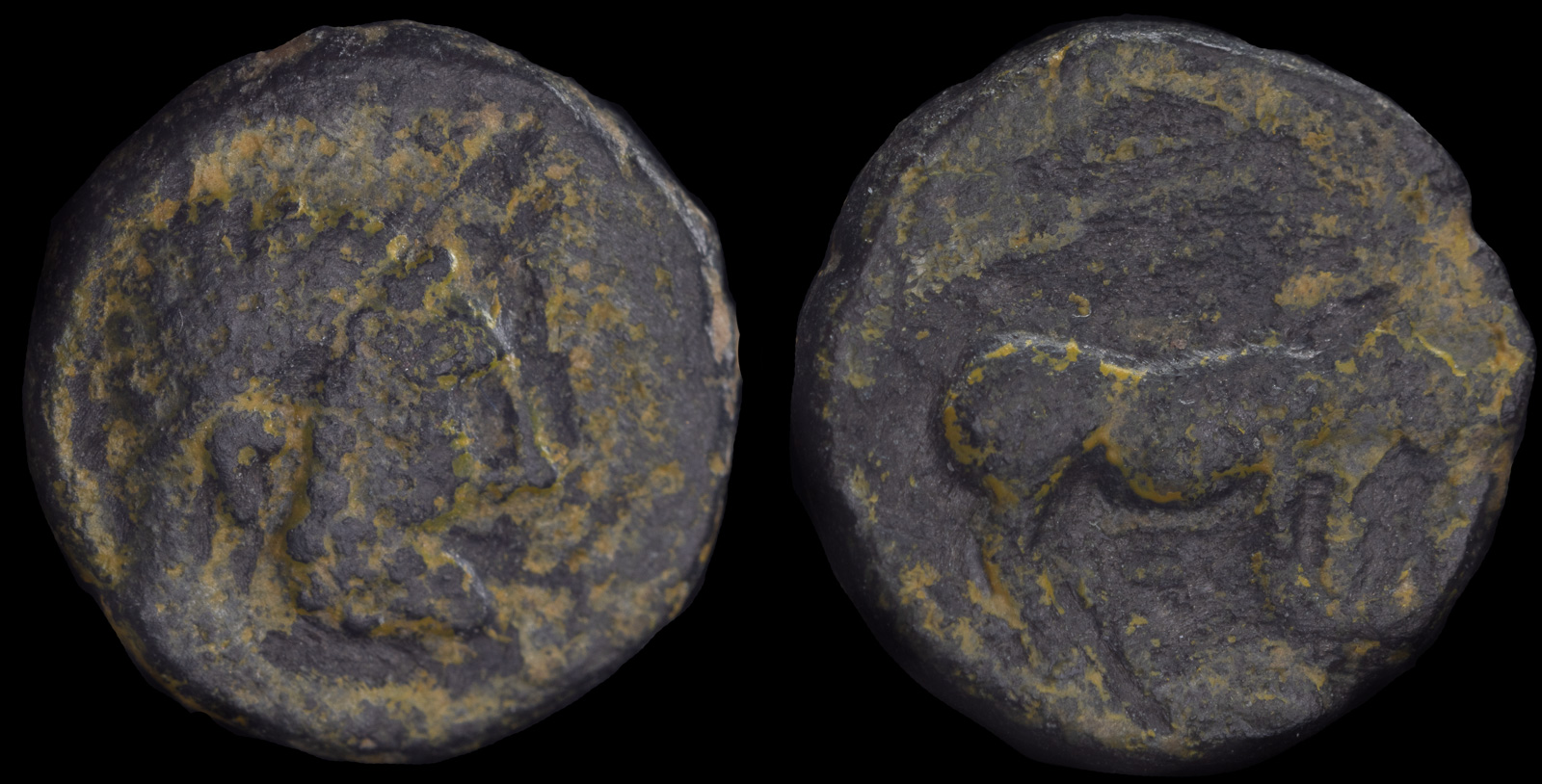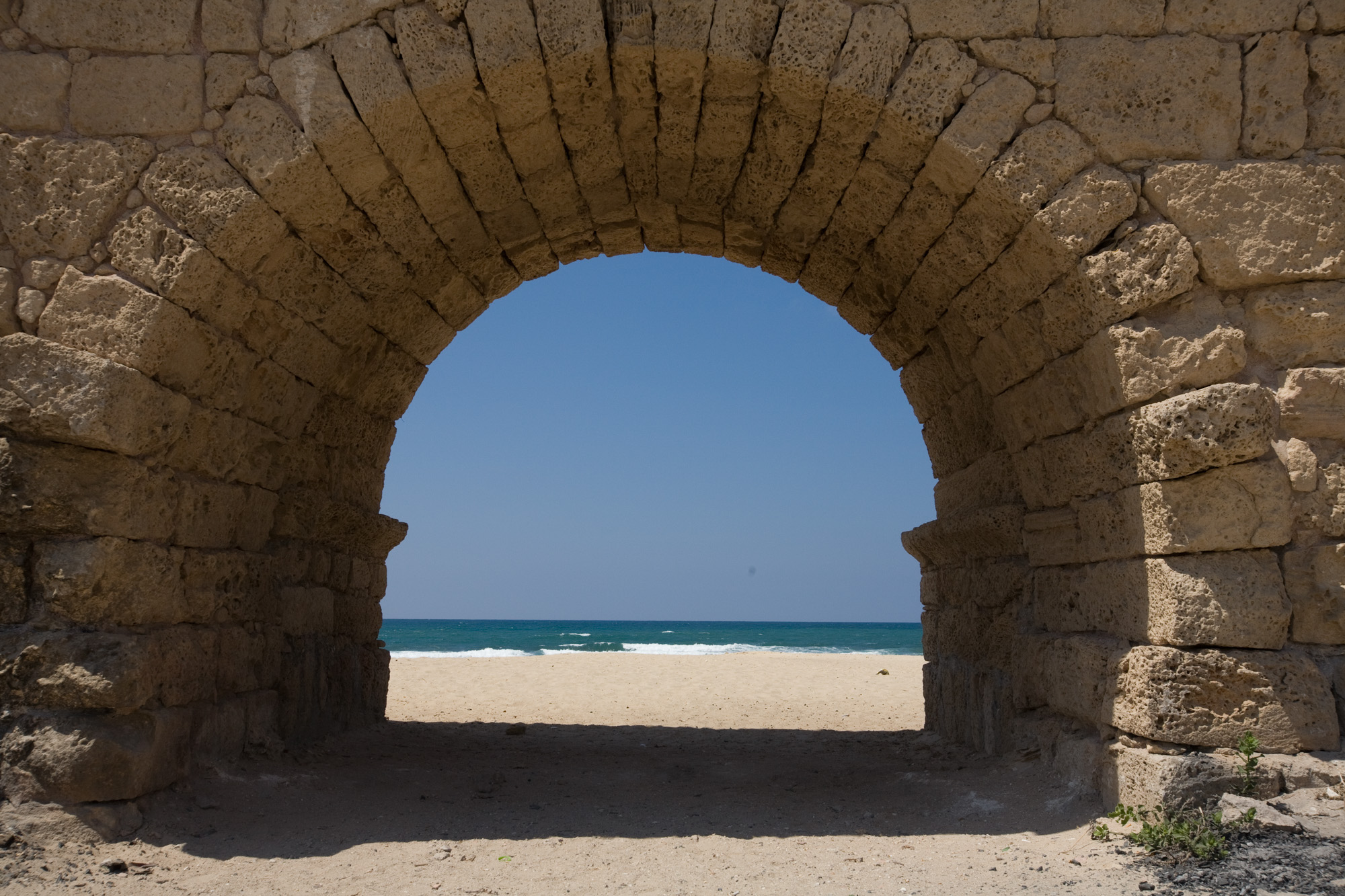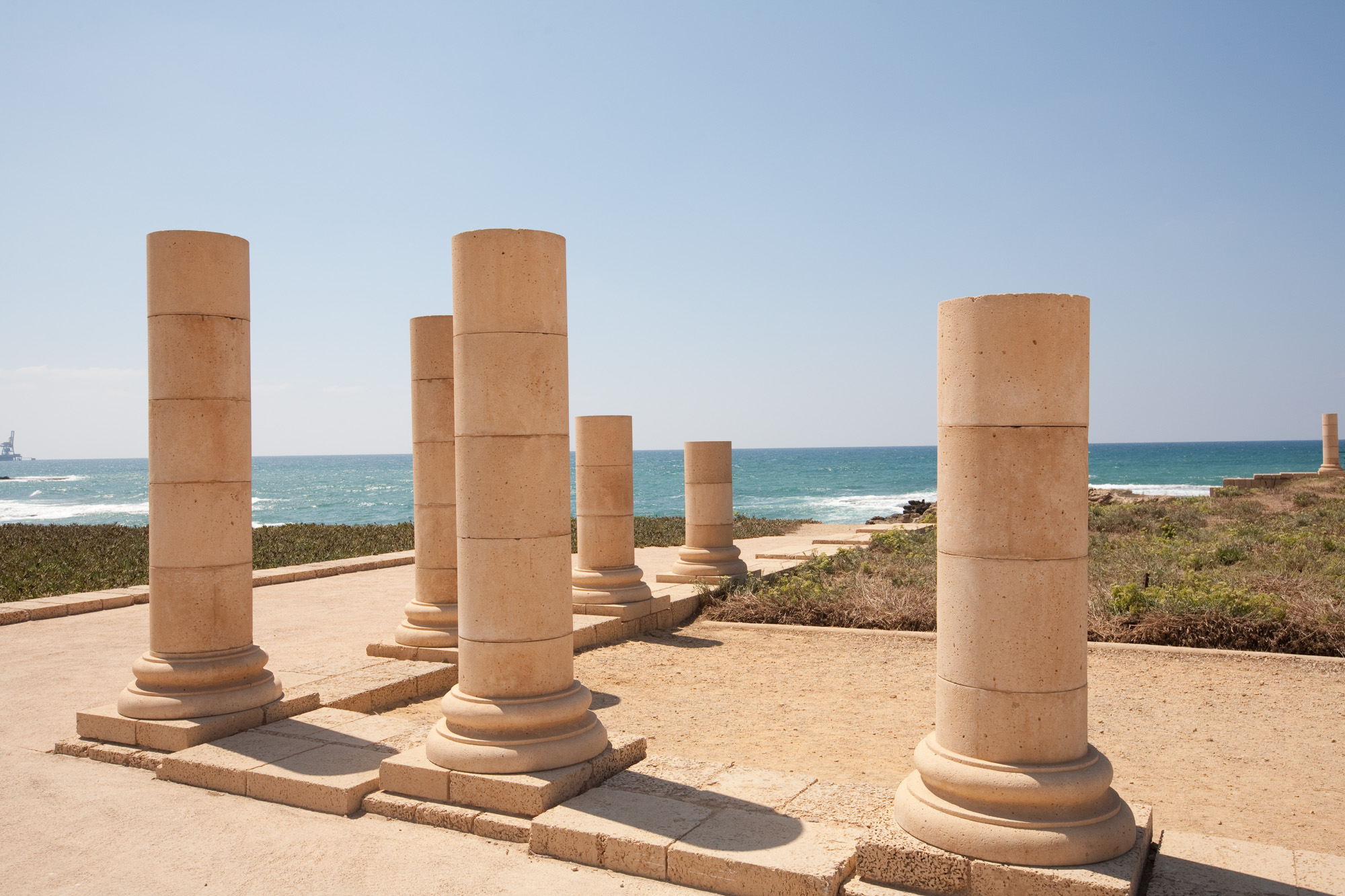
Caesarea Maritima, Samaria
ca 2nd Century CE
AE minim 11mm 1.2g
Obv: Bust of Hercules right wearing taenia
Rev: Board standing rich, S.C in ex
Cf. Hamberger, Caesarea 35-43
What I found most odd about this coin was the fact that it depicts a boar but was minted in the territory of modern-day Israel. These coins have actually been covered well by Hamburger in his “Minute Coins from Caesarea”, which details coins he found while sifting through the sands at the site.
These were used for small change probably in the first two centuries CE and were likely used by the Roman legions, hence the non-religious subjects on both sides.
It should be noted that, though most attributions describe the reverse as a boar, according to Hamburger it may have been a wolf or goat or all three may have been minted.
Caesaria Maritima was originally called “Straton’s Tower”, but per Josephus the city was in bad shape by the time of Herod the Great, who enlarged it, created the port, and named it after Caesar (at that time Augustus). I visited the city a number of years ago and took these photos.


Approximate date of the founding of Caesaria Maritima by Straton I of Sidon. The original name is Straton’s Tower.
Straton’s Tower (later named Caesaria Maritima) is captured by the Judean king Alexander Jannaios.
The Romans declare Straton’s Tower (later Caesaria Maritima) a free city.
Herod I begins construction of the harbor at Caesarea Maritima.
Caesareia Maritima undergoes civil disobedience in reaction to Pontius Pilate’s order to place eagle standards on the Temple Mount.
The Jewish Revolt breaks out, supposedly due to merchants in Caesarea Maritima sacrificing birds in front of a local synagogue.
The Jewish Revolt is suppressed and games are held at Caesarea Maritima to celebrate Titus‘ victory.
December
Titus celebrates victory games at Caesarea Maritima.
October
Diocletian orders the tongue of the deacon Romanus of Caesarea removed for interrupting sacrifices.
September 6
The author and his wife stop at Caesarea Maritima.